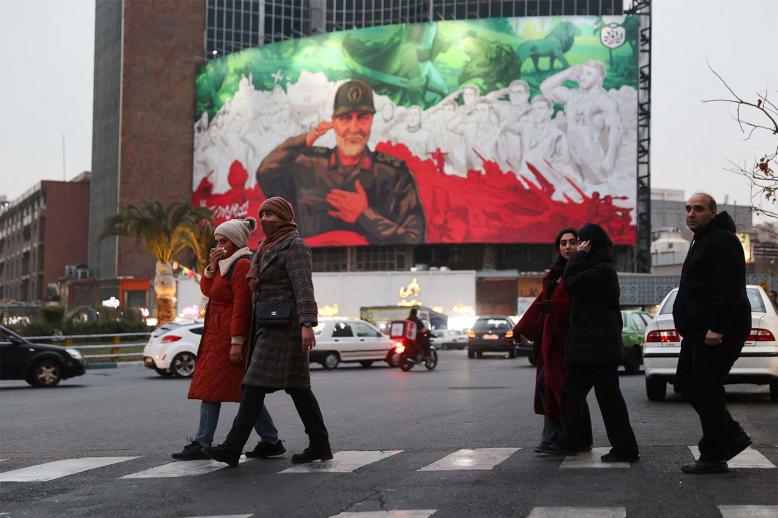Before European Hegemony by Abu-Lughod revisited
On Chinese President Xi Jinping’s two days (March 20, 21) visit to Moscow, Pepe Escobar said: In Moscow this week the Chinese and Russian leaders revealed their joint commitment to redesign the global order, an undertaking that has 'not been seen in 100 years.' Escobar recalls: In Before European Hegemony: The World System A.D. 1250-1350, Janet Abu-Lughod built a carefully constructed narrative showing the prevailing multipolar order when the West “lagged behind the ‘Orient.’” Later, the West only “pulled ahead because the ‘Orient’ was temporarily in disarray.”
We may be witnessing a similarly historic shift in the making, trespassed by a revival of Confucianism (respect for authority, emphasis on social harmony), the equilibrium inherent to the Tao, and the spiritual power of Eastern Orthodoxy. This is, indeed, a civilizational fight, Escobar concludes.
In 1976 Janet Abu-Lughod was awarded a John Guggenheim Memorial Fellowship for Sociology. She received over a dozen prestigious national government fellowships and grants to research in the areas of demography, urban sociology, urban planning, economic and social development, world systems, and urbanization in the United States, the Middle East and the Third World.
However, she was especially well known for her monograph Before European Hegemony: The World System A.D. 1250-1350 wherein she argued that a pre-modern world system extending across Eurasia existed in the 13th century, prior to the formation of the modern world-system identified by Immanuel Wallerstein.
In Before European Hegemony, Abu-Lughod Challenges the notion that there was only one world system with its origins in sixteenth century Europe. She argues that the early world system relied on the linkages between the three subsystems, or cores: China (the most advanced), the Arab World (Egypt and the Near East), and Western Europe. She says the Black Plague played a significant role in causing the disintegration of this world system.
Abu-Lughod highlights the period of 1250 to 1350 because she posits that it constituted a critical turning point in world history and during this period, the Middle East was central in connecting the East and the West. Essentially, the book’s pivotal thesis is that there was no inherent historical necessity that shifted the system to favor the West rather than the East, nor was there any inherent historical necessity that would have prevented cultures in the Eastern region from becoming progenitors of a modern world system.
Immanuel Wallerstein’s “world system”
She is very critical of traditional world system theory of Immanuel Wallerstein, which she views as deeply Eurocentric. Her primary purpose in this book is to present a descriptive survey and analysis of the world economic system in this period, while exploring the reasons for its decline.
Immanuel Wallerstein’s “world system” theory justifies Europe’s customary historical prominence. However useful it may be from the fifteenth century on, it has been only suggestive for earlier periods of history.
In attempting to describe a “world system” proper to the period AD 1250-1350, Janet Abu-Lughod both criticizes and expands Wallerstein’s approach. Critical of his Erocentrism, she argues that the modern European ”world system” is, in large measure, simply the inheritor and continuator of an antecedent “word system” centered on Asia.
Following her theoretical framework and drawing on a wide array of works, Abu-Lughod concentrates on financial and commercial networks within and between the main zones she sees in her “word system”: Europe, the Eastern Mediterranean, the Persian Gulf and western Indian Ocean, the western Indian Ocean and Southeast Asia and China.
Berry K. Gills [1]
According to Barry K. Gills, Professor of Global Development Studies at Helsinki Institute of Sustainability Science, Janet Abu Laghod made a remarkable contribution to scholarship, earning for this seminal work the status of a true classic. The intellectual influence and significance of this book was both pivotal and permanent, influencing the emergence and consolidation of post-Eurocentric perspective of global history, which radically reinterpret the original and historical development of the old system. What follows is a set of personal reflections on the intellectual context, arguments and frame work of analysis put forwarded in this deservedly famous work.
Gill also pointed out that in Before European Hegemony, Abu-Lughod had concluded that the 13th century world system of international trade and production was substantially complex and sophisticated. This included the technology of shipping and navigation, the social organization of production and marketing, and the institutional arrangements for conducting businesss, such as pernerships, mecianisms for pooling capital and techniques for monetization and exchange.
She is adamant that “the rise of the west was facilitated by the preexisting world economy it restructured.” (p 361). It was above all European “trade-cum-plunder” practices “that caused a basic transformation in the world system that had developed and persisted over some five centuries.” Ibid)
Saskia Sassen [2]
To borrow Saskia Sassen of Columbia University, What was particularly important for Janet (Abu-Lughod’s) analysis was that Europe became part of that world system: one dominated by the Moguls, not by Europe! The interconnections among various parts of Asia had been in some cases stronger a century or so before 1250. And while it had included some parts of Europe, notably Spain, the core elements of that world system were far from Europe.
In Janet 's world system, it was the rise of the Moguls in the 13th century and onwards that were the dominant glue.
Further, what mattered in her analysis was that they supported trans-Asian caravan trading, which in tum led to networks that enabled Europe's incorporation into a larger space of Eurasian commerce.
This analysis both brought Europe into a vast Asian geography dominated by the Moguls and sought to show that, whatever the conditions explaining the rise of the later European world-system of the 16th century onwards, these conditions were not the only ones that could lead to a world-system.
Victor Lieberman [3]
According to Victor Lieberman of the University of Michgan, Abu-Lughod seeks to show that within the medieval world system, Europe, the Mideast, India and China demonstrated as essential equality of commercial development. That is to say, Europe enjoyed no institutional or cultural superiority, no monopoly on technological or economic inventiveness, over other major centers. The West’s eventual triumph resulted less from internal structural advantages than from the post-1400 disarray of the Orient; and without this contingent, unpredictable abdication, Asia rather than Europe well might have generated an autonomous, world-transforming capitalism. In her opposition to the venerable tradition of Eurocentric historiography in her spirited attack on European exceptionalism, Abu-Lughod therefore attempts to remap a large and oft-visited territory.
Her analysis is organized geographically, starting with Western Europe and moving through the Mideast and Asia. Each part discusses with insight and admirable clarity and the principal commodities, the systems of production, the mechanisms of domestic exchange and credit, maritime and overland ties with external zones, and the chronology of commercial florescence and decline.
What Wallestein says about Abu-Lughod? [4]
Immanuel Wallestein says Janet Abu-Lughod was a remarkable scholar and bequeathed a significant legacy to the historical social sciences. In Journal of World-Systems Research (August 2015) Wallestein wrote about her book Before European Hegemony:
“The book was not intended to be an exposition of world history over 5000 or 10,000 years. It focused on what she thought was a key period of prelude to the "rise of the west." Her method essentially was to demonstrate that there was a world system composed of a number of overlapping circles , somewhat equivalent in their political economies. Precisely because these circles overlapped, she could demonstrate the practical links between them, both of economic and political interconnections and of cultural diffusions.”
Gaps in Abu-Lughod's analysis [5]
For Berry K. Gills no work of such ambitious scope could be fully holistic and comprehensive.
Thus, there are gaps in Abu-Lughod's analysis. She omits the Baltic from her eight circuit schema. The Baltic circuit was existing during the so-called "Viking" era, and continued during the Hanseatic league of cities.
She omits the Baltic/Dnieper-Volga/Black & Caspian Seas circuit, which is recorded by Arab and Islamic travelers' accounts from the Medieval period.
She also omits the West African- trans-Saharan- Mediterranean circuit, though this exchange nexus played a key role in formation of West African cities and states of the medieval period. Her Indian Ocean circuit (VI) could have been extended on the African coast to include Kilwa, Sofala, and Mauritius. Her circuit VIII, East and Southeast Asia, could have been extended to encompass the Korean peninsula and Japan. The inclusion of these circuits would have provided a more comprehensive analysis of the "Afro-Eurasian world system" of the medieval period, Gills concludes.
References
[1] Journal of World – Systems Research; Pittsburgh Summer 2014
[2] Ibid.
[3] Review published by cambridge.org
[4] Journal of World-Systems Research – August 2015
[5] Journal of World – Systems Research Op Cit.
Abdus Sattar Ghazali is the Editor-in-Chief of the Journal of America.
Email: asghazali2011 (@) gmail.com





